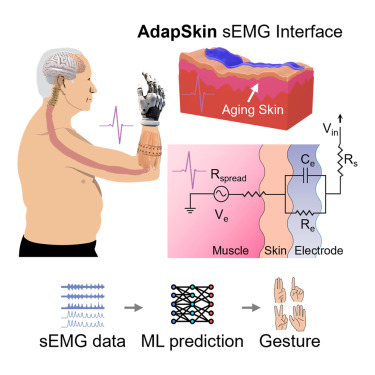Skin-interfaced bioelectronics hold promise for health monitoring, human-machine interaction, and rehabilitation. The properties of skin, however, vary individually and change with age; dryness and wrinkles alter skin’s electrical properties and morphology, thereby challenging precise and consistent signal recording and decoding. We present AdapSkin, an age-adaptive, skin-conformal, bioadhesive, and stretchable polymeric electronic interface that accommodates skin morphologies to enable high-fidelity and high-density electrophysiological recording. AdapSkin’s aqueously processed organic nanocomposite forms a conductive polymer percolation network with a gel-like interface that lowers modulus, enhances skin-electrode contact, and minimizes variations in impedance, signal-to-noise ratio, and motion artifacts. These advances improve surface electromyography data quality for neuromuscular assessment and prosthetic control. Machine learning demonstrates AdapSkin’s improved gesture classification accuracy in older users due to the improved data quality.

